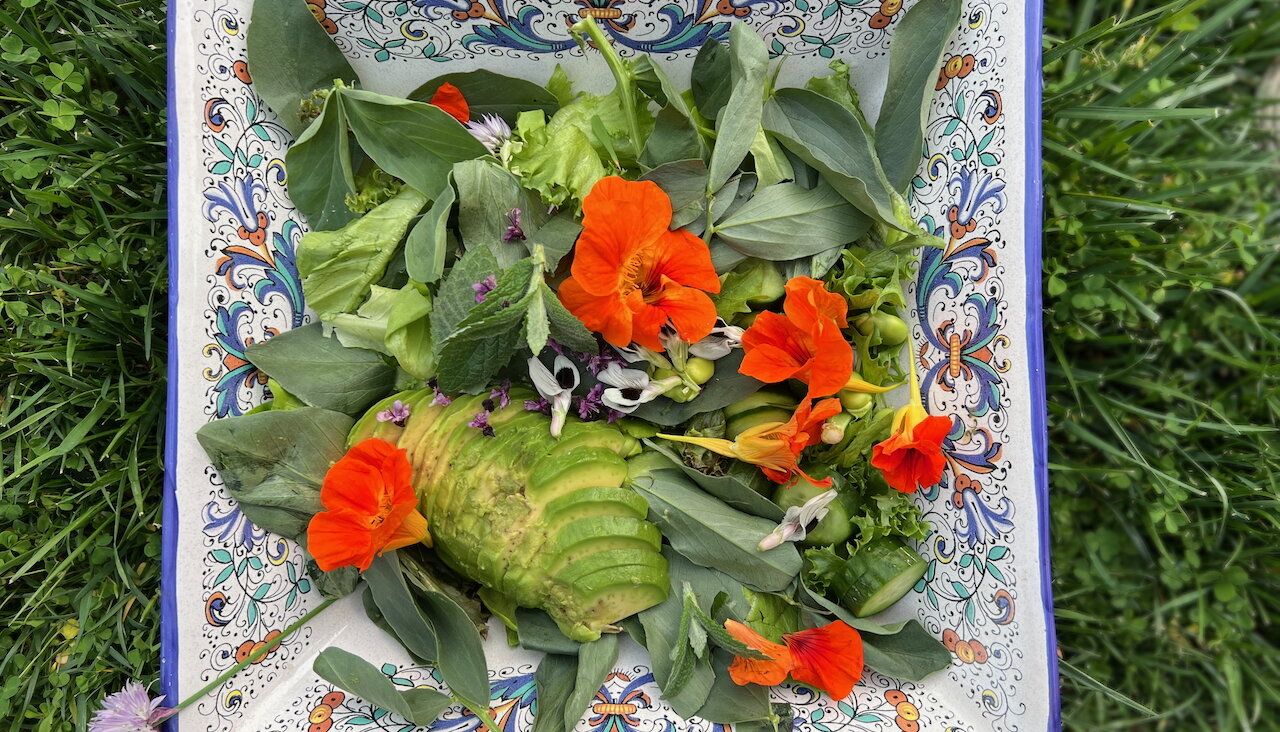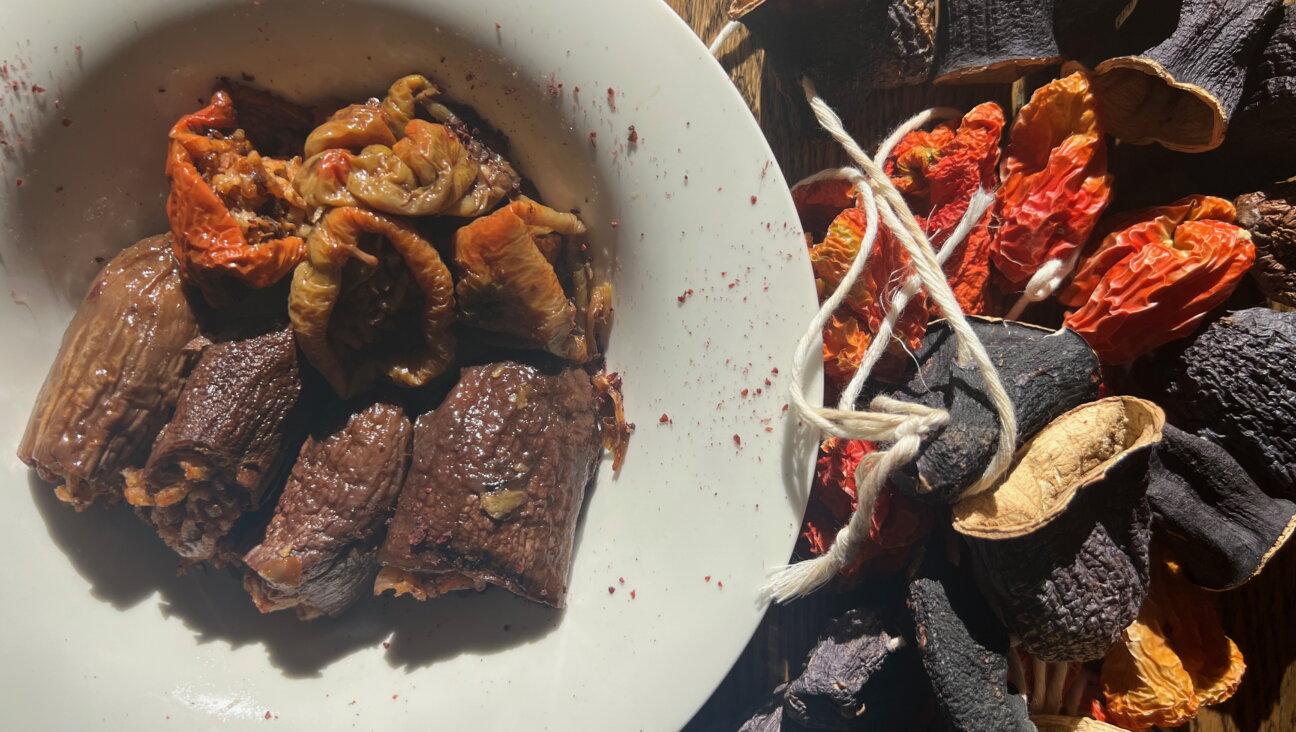Classic Knishes

If you live outside of a knish capital, try making the potato dumplings at home with the recipe from Brooklyn’s legendary knishery Mrs. Stahl’s. Image by Thinkstock
Fannie Stahl’s granddaughters summoned recovered memories to bring this recipe to life. Toby Engelberg, who sold her knishes in the Bay Area for a while, enlisted the help of her elder cousin from New York, Sara Spatz, who, as a young woman, worked in her grandmother’s shop in Brighton Beach. I was there to learn. What struck me most was the aroma. It filled the kitchen as soon the skins were peeled from the first onions, and lingered long after the last tray of knishes had cooled.
Related
Dough:
3 1/4 cups flour
1 tablespoon sugar
1 teaspoon salt
1/2 cup vegetable oil
1 cup lukewarm water
Turn on oven on low until dough is ready. Mix flour, sugar, and salt. Add oil and water. Mix with a spoon until the dough pulls together, or use a food processor or stand mixer (with a dough hook).
Turn out the dough on board and knead it, incorporating all pieces. Knead until dough is one piece, smooth and glossy. Turn off the oven. Oil the dough and place it in oiled, covered bowl. Place in oven until you are ready to use it. Let the dough rest at least 2 hours; the dough should barely rise, if at all. Keeping the dough overnight in the refrigerator is fine. Bring it back to room temperature before use.
Potato filling:
6 pounds russet or new potatoes
1 cup oil
1/4 cup salt, or to taste
1 1/2 teaspoon pepper
8 cups thinly sliced raw onions
Scrub potatoes and peel them, unless the new potatoes have very thin, unblemished skins. Boil potatoes for about 20 minutes until knife tender, then drain. Mash with a potato masher. Add oil, salt, and pepper to taste. Mix. Stir in the onion.
Assembling and baking
Vegetable oil and flour as needed
Preheat oven to 450 degrees. Roll out about half the dough on a lightly floured counter or tabletop. Roll with handle-less rod-style rolling pin out from the center until dough is thin enough to see through, about 1 ⁄ 16 -inch thick.
Oil top edge of dough with a pastry brush. Place a 2-inch-diameter line of filling about 2 inches from the top edge of the dough. Pick up top edge and drape over filling. Brush oil on dough in a 2-inch strip on the bottom edge of the filling. Pick up the dough with filling and roll again onto the oiled dough, compressing the filled dough as you turn it. Repeat until the dough covers the filling three to four times, being sure always to brush oil on the dough first.
Use a knife to separate the filled potato knish log from the remaining dough.
Cut off edges of filled dough. Cut the filled roll into pieces about 6 inches long and coil each piece like a snail. Tuck the remaining end into the bottom of the coil.
Alternatively, place stuffed roll of dough onto ungreased cookie sheet and slash with a knife crosswise every 2 inches. Leave an inch of space between each roll or coil of dough.
Bake 20–25 minutes until the knish skin is browned and knishes are cooked through. Start knishes on lowest rack of the over and raise them to top rack after about 10–12 minutes. Let the knishes cool on pan. If you cooked the knishes in long rolls, cut them into individual pieces.
Knishes can be reheated in the oven or in a skillet on the stove top.
Makes about 18 knishes.
Excerpt from KNISH: In Search of the Jewish Soul Food by Laura Silver, published by Brandeis University Press/University Press of New England. This recipe first appeared on J. Weekly.
The Forward is free to read, but it isn’t free to produce

I hope you appreciated this article. Before you go, I’d like to ask you to please support the Forward.
Now more than ever, American Jews need independent news they can trust, with reporting driven by truth, not ideology. We serve you, not any ideological agenda.
At a time when other newsrooms are closing or cutting back, the Forward has removed its paywall and invested additional resources to report on the ground from Israel and around the U.S. on the impact of the war, rising antisemitism and polarized discourse.
This is a great time to support independent Jewish journalism you rely on. Make a gift today!
— Rachel Fishman Feddersen, Publisher and CEO
Support our mission to tell the Jewish story fully and fairly.
Most Popular
- 1

Fast Forward Ye debuts ‘Heil Hitler’ music video that includes a sample of a Hitler speech
- 2

Opinion It looks like Israel totally underestimated Trump
- 3

Culture Cardinals are Catholic, not Jewish — so why do they all wear yarmulkes?
- 4

Fast Forward Student suspended for ‘F— the Jews’ video defends himself on antisemitic podcast
In Case You Missed It
-

Fast Forward Huckabee denies rift between Netanyahu and Trump as US actions in Middle East appear to leave out Israel
-

Fast Forward Federal security grants to synagogues are resuming after two-month Trump freeze
-

Fast Forward NY state budget weakens yeshiva oversight in blow to secular education advocates
-

Fast Forward Margot Friedlander, German Holocaust survivor who landed a Vogue cover, dies at 103
-
Shop the Forward Store
100% of profits support our journalism
Republish This Story
Please read before republishing
We’re happy to make this story available to republish for free, unless it originated with JTA, Haaretz or another publication (as indicated on the article) and as long as you follow our guidelines.
You must comply with the following:
- Credit the Forward
- Retain our pixel
- Preserve our canonical link in Google search
- Add a noindex tag in Google search
See our full guidelines for more information, and this guide for detail about canonical URLs.
To republish, copy the HTML by clicking on the yellow button to the right; it includes our tracking pixel, all paragraph styles and hyperlinks, the author byline and credit to the Forward. It does not include images; to avoid copyright violations, you must add them manually, following our guidelines. Please email us at [email protected], subject line “republish,” with any questions or to let us know what stories you’re picking up.















